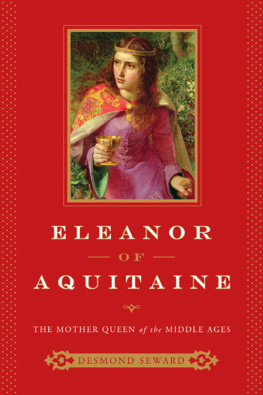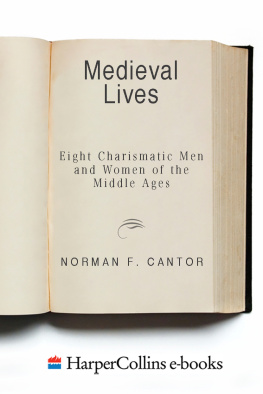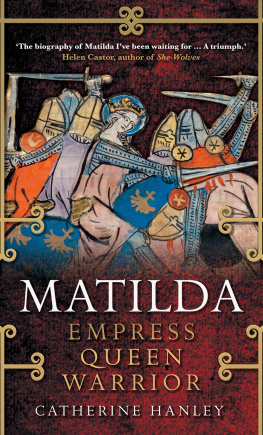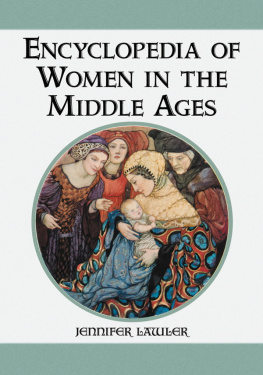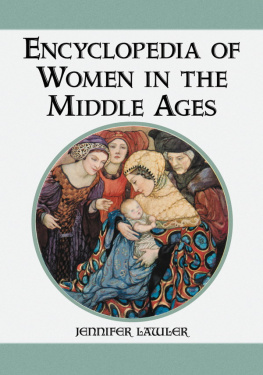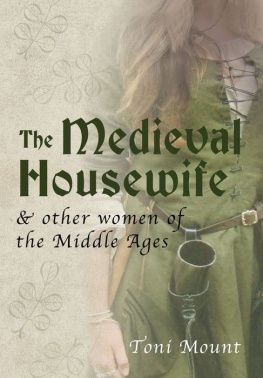The Most Powerful Women in the Middle Ages: Queens, Saints, and Viking Slayers, From Empress Theodora to Elizabeth of Tudor
By Melissa & Michael Rank
Digital Edition
Copyright 2013 Michael Rank
All Rights Reserved
Table of Contents
FREE BONUS 'HISTORY OF ALEXANDER THE GREAT' AND 'MYTHOLOGY STORIES' 2-BOOK BOXED SET

If you would like to download the free ebooks History of Alexander the Great and Mythology Stories: Tales from Norse, Old German, Hindu, and Egyptian Mythology, you can get them here by clicking on this link: http://michaelrank.net/freebook
Best,
Melissa and Michael
Introduction
The Fairer Sex in a Time of Captivity?
The story of women taking over the duties of their husbands in factories and homes during times of war is a familiar one. While he was deployed overseas to stop a foreign dictator from world conquest, she was placed in charge of the household. In the past, she depended on her husband's paycheck for all their material needs. Now, for the first time, she was solely in charge of the family's finances. She was also responsible for new duties such as simple home repairs and overseeing improvement projects.
Money was tight at this time, so before long, she rented out her home's empty rooms to lodgers and prepared them meals. The modest revenue was used to upgrade its furnishings and maybe add an additional room. Soon the lodging business grew. To accommodate her growing clientele, the housewife started hiring support staff.
Without her realizing it, she had suddenly becoming a manager. Her business had transformed into the equivalent of a small hotel and restaurant. To guard her capital she purchased a gun, since the lodging was in an unsafe location. After a few lessons at the local range, she had become a proficient markswoman. On one occasion she was even forced to stop a criminal foolish enough to cross her doorpost.
When her husband finally returned from the war, he expected to meet his meek housewife still caught up in her domestic duties. Instead, he encountered a savvy entrepreneur who had come to enjoy all the benefits of wealth creation and independence. She started to ask why she could not have experienced this condition earlier in her life. Soon she encountered like-minded women who wanted similar social recognition. They organized, and within a few short years, these women started to make their voices heard across society.
Does this sound like the story of women mobilizing in America and Europe between World War II and the 1960s? It may, but it is actually a description of England in the 1400s. There, Margaret Paston of Norwich was a rich heiress who managed Caister Castle in Norfolk. Her husband was Sir John Paston, a lawyer who spent several months each year in London at the courts.
Margaret supervised the vast estate; organized the castle's defense; its brewery, bakery, and stables; made medicine; watched over the sick; and even arranged the marriages of those living in her household. When in 1448, political rival Lord Moleyns attempted to claim a house on her lands by force, she readied the men-at-arms.
Margaret wrote to her husband requesting crossbows, arrows, and poleaxes. She had to fight 1,000 armed men who had entered her fortified residence with battering rams. Margaret was carried off, and later returned when the family dispute was resolved, but she had shown herself to be of a rather tough mettle.
This story is not what most people expect when they think of women in the Middle Ages. The image that springs to mind is a damsel in distress who sits in a high tower wearing a traffic-cone for a hat and who waits for a knight to rescue her from her captors. Once freed by this knight, she is shoved into a forced marriage, breeds sons for her husband, and keeps her mouth shut in public. If not, she is scorned by the village for the sin of being a woman that expresses independent thought. If she continues in her mortal sin, the male priests consent to have her burned at the stake as a witch, because that is what people did in the Dark Ages.
If our hypothetical woman was of a lower social standing or a peasant in this imaginary medieval world, then she had absolutely no legal rights. Other community members regarded her as much as they did the livestock a piece of property to be bought and sold. If she were beaten, enslaved, tortured, or killed, then kings and church leaders turned a blind eye. They considered her at best a necessary component for procreation, and at worst a tool of the devil and a signpost on the road to damnation.
Such ideas about the Middle Ages are dominant, and they would be very convincing if not for the fact that they are almost completely fictional. It is true that women typically had fewer legal and social rights as men in the Middle Ages. But the idea that the period from 500 to 1500 AD was a time of stagnation is based more on the ideology of historians in recent times than any truth about the past.
The Dark Ages was invented during the Enlightenment Period as a way for scholars to look upon the past as a period of less-developed civilization. Protestant scholars in particular depicted this period in this way due to the corruption of the Catholic Church. They saw the popes as pagan kings who ruled through superstition and moral hypocrisy. They were unreasonable and barbaric.
The more romantic depictions of medieval women, knights, chivalry, and jousting tournaments come from the period of Romanticism, which originated in modern Western Europe. Medieval costumes and symbols became all the rage in the 19th century. German emperors dressed up in such clothing at public balls. Ludwig II of Bavaria built his famous fairy-tale castle at Neuschwanstein in 1868, which is the direct inspiration for the iconic castle at Walt Disney World. These accoutrements of medieval life can be seen today at events organized by the Society for Creative Anachronism.
In Victorian England, the ruling class held reenactments of tournaments. They donned their best imitation of medieval dress at royal and aristocratic masquerades and balls. Jousting tournaments were held. And the idea of a passive lady-in-waiting that existed throughout the Middle Ages solidified in the public consciousness, even if it was a modern fiction. This mythical woman wore a medieval gown, but she had all the virtues of a Victorian lady who espoused sexual restraint, was kept in idle luxury, and held a strict social code of conduct.
As a result, the concept of a real medieval woman is misunderstood because history of this era has largely been filtered through Victorian ideals. This was a time in which British females lacked suffrage rights or the ability to own property. It is from this time that the image of a woman wearing a traffic-cone hat while sitting wistfully by a window emerged.
There is a second misconception of medieval women that is equally wrong. It comes from committing one of the simplest mistakes when studying history: dividing its characters into heroes and villains, and imagining the former to be essentially modern people trapped in the past. The former are thought to be visionaries that could see the 21 st century from their lofty vantage points in history. They did their best to nudge society in this direction and were often punished for their foresight. They dreamed of equal rights, constitution democracy, universal suffrage, and fair wage laws for women. The villains, in contrast, want to inhibit reform, human rights, and the inevitable march of progress. As they sat in their castles and twirled their mustaches, they schemed of keeping society in its backward state and dragging it even further in the past. They hoped to deny women their rights out of pure misogyny. As a result, they are the forefathers of civilization's enemies today, whether it be jihadis in the Middle East or fundamentalists in America.
Next page



